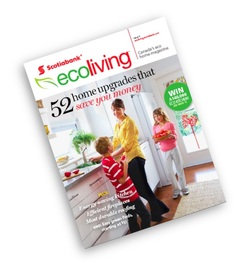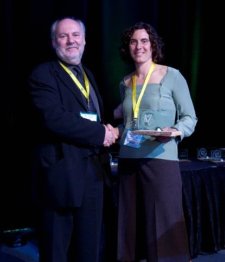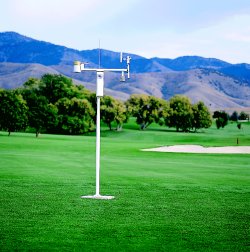
There are also contests, awards and information about rebates. If you're a paper person you are welcome to pick up a copy at your local branch. Enjoy and let us know what your thoughts are.
| EcoAmmo Bombshell Blog |
|
 We were happy to assist in reviewing the roofing options in the third edition of EcoLiving Magazine. You can check us out on page 24, and view the entire issue online HERE. But don't just skip ahead, there are actually some great Canadian products and solutions in ScotiaBanks EcoLiving Magazine.
There are also contests, awards and information about rebates. If you're a paper person you are welcome to pick up a copy at your local branch. Enjoy and let us know what your thoughts are.
0 Comments
Albertans - and Canadians from across the country - opened their hearts and wallets after the disaster to help the victims of the Slave Lake fires. Help was instant and appreciated. Now, a couple of months after the disaster, Slave Lake is starting to rebuild - and the Canada Green Building Council (CaGBC), the Alberta Chapter, CaGBC and Edmonton-based Ecological Homes have teamed up to offer some good news for Slave Lake residents. The CaGBC is picking up the tab for any Slave Lake rebuild project to register for LEED certification - and Ecological Homes is paying for LEED certification for all Slave Lake fire rebuilding projects until August 31, 2012. "A lot of businesses have been stepping up to plate to help Slave Lake, and we want to do our part as well," said Les Hagen, president of Ecological Homes, which provides affordable green building solutions for help designing and building green homes. Tanya Doran, Alberta Chapter Executive Director, is busy making local arrangements for Slave Lake residents who want to pursue the option of a sustainable home. "The community is literally rebuilding from the foundations, up. Out of their nightmare comes an opportunity for Slave Lake to reap the benefits of sustainable homes," she said. "With the Canada Green Building Council and builders such as Ecological Homes assuming the costs of LEED registration and certification we are opening the doors to a world of new options for the community." Perspectives had prepared an article for the May 2011 edition featuring the Slave Lake home of Reg Carr and Cathy Shultz. The home, which received only minor damage in the fires, is scheduled for completion in August. Because of the disaster, Perspectives chose not to run the feature, but Slave Lake's newspaper, the Lakeside Leader published it on June 22. Below is the original article. Gold Rush in the North  Don't you just love it when people put their money where their mouths are - especially when their actions have a happy ending?
Reg Carr and Cathy Shultz of Canyon Creek on Lesser Slave Lake are, indeed, happy with their decision to build a new home that stays true to their environmental principles. And their beautiful, soon-to-be-completed 1,700-square-foot-home is going for LEED Gold certification! Reg and Cathy approached Les Hagen, president of Ecological Homes, an Edmonton-based company that provides affordable green building solutions for help designing and building their green dream home. "The Carr-Shultz residence is our flagship project," says Les. "This home is an opportunity to demonstrate our ability to deliver a high-quality, energy-efficient - and yet affordable - ecological home."The two-storey home, located beside Alberta's largest self-contained lake, includes loads of energy-efficient features. "We modelled the house with HOT2000 software, which provides a detailed snapshot of energy performance and cost implications of various design options. Reg and Cathy wanted a custom design so we were able to consider the impact of each decision on energy efficiency." The home includes:
Les says a standard new house rates anywhere from 66 to 74 on the EnerGuide scale, with a typical energy-efficient new house rating between 75 and 79. The EnerGuide rating system describes a house rating above 80 as "excellent," with substantially reduced energy consumption. Cost is the second important pillar of the ecological home. "Affordable green building is what we're all about. A green home shouldn't put you in the red," notes Les. He says the Slave Lake home will be completed in the $400,000 range, which is definitely on the lower end of the affordability scale of highly efficient LEED homes. "We work with the homeowner from the design stage forward to control costs. A lot of the decision making is in the hands of the homeowner, and a major factor in the final cost is finding ways such as using panelized and pre-fab building materials to reduce labour costs." Les sees good potential for the costs of green homes and solar energy to decrease over time. "Today, there is an exponential cost curve to green building. Above a certain threshold, costs skyrocket. We're trying to land on the knee of that curve and to produce a cost-efficient and energy-efficient home." The home is expected to be completed by late June.  Moulds are found in our natural environment and are vital to the decomposition of organic materials – they also serve to recycle nutrients back into the soil.
Moulds reproduce and grow very rapidly; all that is needed is a food source and moisture and they will flourish. Unfortunately, food sources for moulds can include wood, paper, insulation, and even paint and drywall. As important as moulds are to the natural world, they can become dangerous and even toxic when located indoors. Mould only needs a few days to start colonizing and producing spores – these spores can produce compounds such as mycotoxins that in humans can produce anything from allergic reactions to serious immune and respiratory problems. Once mould has gained a foothold indoors, the removal and clean up process can be very costly and time consuming. The best way to deal with mould is to ensure that your home is an unfriendly place for it to grow. One way to do this is to use a wood sealer to prevent moisture gain. An Alberta company, Genics Inc., manufactures a product called CobraTM Coat-Blu, an oil-free, environmentally safe, home use mould control. It is easy to apply and is non-toxic to people; it can be used as a pre-treat for residences and commercial buildings as well as on decks, fences, poles, spindles, landscape timbers, lattices, gazebos, etc. For more information, please visit www.genicsinc.com, or www.greenalberta.ca.  There are many cladding options available on the markettoday, but choosing one that is right for your project can be a daunting task. Choices have to be made between the look, the performance, and the cost of the material, with one sometimes being sacrificed for another. Natural brick is very beautiful, but a common complaint from designers is that efflorescence and vanadium staining can compromise the original design of a project, making the building appear dated and unsightly. Natural stone is also very aesthetically pleasing, but the weight of the material can be prohibitive to some projects, and can also be expensive.
A new product on the market that addresses these issues is the Suretouch cladding system developed by Permacon. Premoulded insulated polystyrene panels are first installed onto the existing wall with anchors. The masonry is then popped into place and mortar is applied with a manual injection tool - the system has been simplified to the point where anyone with a basic understanding of construction can install it. Brick, stone or concrete options are available and the ease of installation keeps the costs down. A high insulation value of R-13.5, combined with recyclable panels, also makes the system and solid green building option. Water drains out through channels in the polystyrene and through weep holes at the bottom, preventing staining of the masonry. For more information, please visit www.suretouch.ca, orwww.greenalberta.ca. The July edition of Perspectives reported LEED Canada for Homes had almost 800 homes registered across Canada.
The numbers keep growing. Now, the program shows 906 units registered in total, with 147 of those in Alberta. LEED Canada for Homes applies to single family homes and multifamily buildings up to three residential storeys. Mixed use projects can apply in certain circumstances. Existing homes are able to participate in LEED Canada for Homes provided they meet certain conditions. Alberta homebuilders interested in participating in the LEED Canada for Homes program are encouraged to contact eitherTyler Hermanson, 4 Elements Integrated Design Ltd. in Calgary at 403-250-45514 or Stephani Carter, EcoAmmo in Edmonton at 780-466-7616 or toll free 1-866-430-7616.  Name a Chapter member who works tirelessly to support and encourage the younger members of our profession. Now, name the Chapter member who was recognized for her great efforts with an achievement award – the Student Leadership Award – at the CaGBC annual conference in Vancouver.
Congratulations, Jessica Roder of ONPA Architects! Jessica started to establish the Emerging Green Builders (EGB) section of the chapter, in Edmonton in 2008, arranging building tours, social events and activities for students and young professionals. Later that year, she was elected to the Chapter’s Board of Directors. In 2009, she spearheaded a design competition which drew enthusiastic response from a variety of student and young professional teams. No longer an EGB herself, she continues her involvement with the EGB committee, ensuring a smooth transition as new leaders begin to take over. Before moving to Edmonton, Jessica was involved in the EGB group in Winnipeg, again working to establish its presence in that market. In addition to green buildings, Jessica’s other volunteer work reflects her passion with sustainable living. She helped establish Operation Fruit Rescue Edmonton – a group dedicated to bringing together people who have fruit trees and bushes with people who would like to pick fruit. The produce is shared between the owners, pickers and the food bank. A little over a year after launch, LEED Canada for Homes is growing quickly with almost 800 homes registered in every province and supported by a provider network of 11 organizations from Vancouver to Halifax.
Alberta has recently brought on two new providers, EcoAmmo in Edmonton and 4 Elements Integrated Design in Calgary. These new providers have greatly increased the number of registered projects from Alberta and improved support for existing Alberta projects. Another area of growth has been Atlantic Canada with a new Provider added in March. Registrations from the east coast have gone up significantly given the modestly sized market. Related updates include the recently launched Reference Guide, which is now available. CaGBC members can order it for $295 from the CaGBC. As well, CaGBC members have been pushing for an upgrade of the prerequisite for energy performance within LEED Canada for Homes. The CaGBC is working with technical volunteers to craft the new minimum level for energy performance. This fall, the LEED AP Homes exam and credential will launch in Canada; many builders, developers, architects and project teams are eagerly awaiting its release. For more information or to order the reference guide, visit www.cagbc.org/leed/homes/ or contact your local Provider.  A major trend for this year is related to post-occupancy evaluations and data. The green building industry has made the transition from merely getting everyone excited about building green to actually building green, projecting efficiencies and entering an era where the ‘proof is in the pudding,’ or, in this case, ‘the proof is in the post-occupancy data.’
In order to prove that green buildings are performing as well as the projections, we need to measure and track everything we want to impact positively, including seeing building performance as a system – energy, water, indoor air quality, and even the grounds associated with the building! The mere placement of a viewable and interactive meter can increase efficiencies 3% to 5%. As the old management adage goes, ‘You can’t manage what you don’t measure.’ In Alberta we have several emerging service providers to help measure and track performance. One such leader is ExactET, providing Climate Controlled Irrigation Services. Just by connecting to their network of local weather stations they can reduce a client’s potable water use for irrigation by 40% to 70%! Coupled with the use of auxiliary or grey water approved irrigation equipment, potable water use can be completely eliminated! ExactET’s services can aid in achieving up to 7 credits and one prerequisite in the new LEED-EBOM (Existing Buildings: Operations & Maintenance) Rating System. For more information, see www.exactet.ca orwww.greenalberta.ca. Graham Construction staffer Steve Martin isn’t surprised about the growing interest in green building. “It’s in humanity’s best interest to take an interest in green construction. It’s a responsible direction for construction overall.”
Armed with that philosophic perspective and the need to make sense of an intimidating array of information in preparation for the LEED® Accredited Professional (AP) exam later this year, Steve signed up for the “Building Green with LEED” course offered this spring at NAIT. NAIT is one of only eight to 10 post secondary institutions in Canada approved by the Canada Green Building Council to offer the course. Two years ago, the institute had identified that sustainable building techniques and alternate energy technologies are leading-edge industry practices. These emerging fields dovetail exactly with NAIT’s mission. “We like to develop or facilitate the development of leading edge courses and programs as we are a technology-based Institute. We knew there would be a big demand for this course, given what we were hearing from industry, so we approached the CaGBC and worked with them to ensure both their needs and our students' needs would be met by offering this course,” said Laurie Halldorson, NAIT’s Continuing Education Manager. Through instructor Stephani Carter of EcoAmmo, the 36-hour course offers case studies, field trips and guest speakers to give students a working knowledge of the CaGBC LEED® Canada for New Construction Rating System 1.0. Key focuses include sustainable site development, water savings, energy efficiency, materials selection and indoor environmental quality. The course is offered Saturdays and evenings to accommodate working professionals. “The course really gave me a good handle on the specific aspects of the LEED-NC system. In particular, it helped tremendously in understanding the reference guide,” said Martin. “Going through the reference guide on your own is like being handed a telephone book. It’s overwhelming. The NAIT course really clarified specifically what to study and how to use the guide.” In fact, with the popularity of the spring course and the impending Dec. 31, 2009 deadline for writing either the LEED®Canada NC exam or the LEED® Canada CI exam, NAIT dramatically increased the number of seats available for the course that begins in October – and the Oct. 13 Edmonton class is almost full. “There is huge demand for this course. People are racing the clock to get their AP designations,” said Halldorson. NAIT’s Calgary location is offering the same course (ARC50) to Calgary professionals this fall starting Oct. 6. The course runs a combination of Tuesday and Wednesday nights with some Saturday classes. Check the NAIT website for the exact combination of dates. There will even be a few Edmonton and Calgary class times linked together via video conference. For more information, e-mail [email protected] or call NAIT at 1-780-471-6248 to register. |